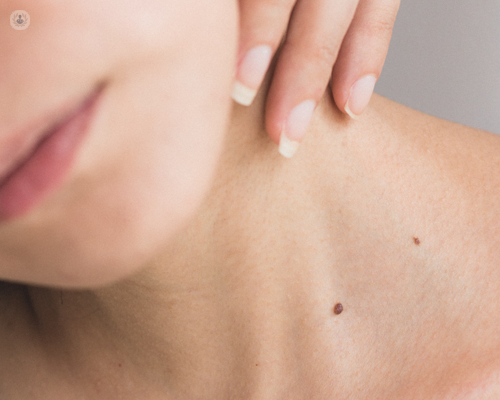Mole removal surgery for skin cancer prevention: Why early detection is key
Escrito por:Mole removal surgery is a crucial preventive measure in reducing the risk of skin cancer. Skin cancer, particularly malignant melanoma, can develop from abnormal changes in moles. Early detection and removal of suspicious moles provide the best chance for preventing the spread of skin cancer, improving long-term outcomes for patients.

Why is early detection important?
Early detection of skin cancer is vital because it dramatically increases the likelihood of successful treatment. Moles that change in size, colour, or shape, or those that become itchy or bleed, are key indicators of potential skin cancer. If caught early, malignant melanoma can be surgically removed before it spreads to other areas of the body.
Regular skin checks by a dermatologist and self-examination are important for identifying any abnormal moles at an early stage. By removing potentially cancerous moles promptly, patients can significantly reduce the risk of cancer progression.
What’s involved in the mole removal procedure?
Mole removal surgery typically involves either excision (cutting the mole out) or shaving (removing the mole’s top layers). In cases where cancer is suspected, the removed tissue is sent for biopsy to confirm the presence of cancer cells. If the biopsy reveals skin cancer, further treatment may be required, including additional surgery to remove more tissue or, in advanced cases, targeted therapies.
Can mole removal prevent skin cancer?
Mole removal can be a highly effective method for preventing skin cancer, particularly if the mole shows early signs of abnormality or has a high potential for becoming cancerous. By removing suspicious moles before they have a chance to develop into melanoma or other forms of skin cancer, patients can reduce their risk of future complications. While removing a benign mole doesn't necessarily guarantee that skin cancer will be prevented, it does eliminate one potential source of cancerous growth, offering a proactive approach to skin health.
Dermatologists often recommend mole removal for individuals with a family history of skin cancer or those who have multiple risk factors, such as:
- fair skin;
- excessive sun exposure, or;
- a large number of moles.
Early mole removal, combined with regular skin monitoring, can significantly reduce the likelihood of developing skin cancer.
How quickly can a mole turn into melanoma?
The transformation of a mole into melanoma can vary significantly from person to person. In some cases, a mole may evolve into melanoma over months or even years, while in others, changes can happen more rapidly. Melanoma tends to grow and spread more aggressively compared to other types of skin cancer, so recognising early signs is essential.
Moles that change quickly in appearance, such as those that increase in size, develop irregular borders, or change colour, may be turning cancerous. Dermatologists emphasise the importance of regular skin checks because the earlier a suspicious mole is identified and removed, the better the prognosis.
How can the risk of developing skin cancer be minimised?
After surgery, patients are encouraged to continue practising sun safety to minimise future risks. This includes:
- wearing high-SPF sunscreen;
- protective clothing, and;
- limiting sun exposure, especially during peak hours.
Early intervention combined with consistent follow-up care is the best strategy for preventing the reappearance of potentially cancerous moles.


